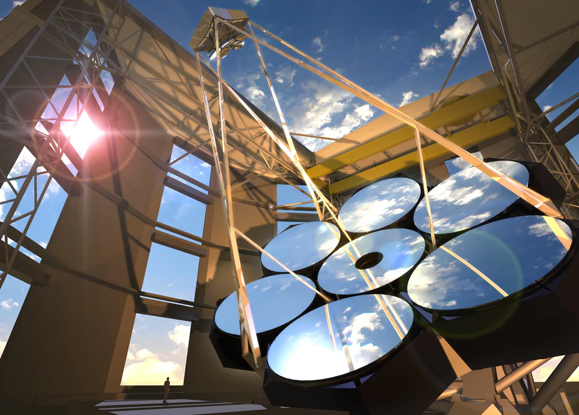While thousands of Wildcat fans are cheering, and jeering, over this year’s football team, a ground-breaking process in the field of astronomy is taking place directly beneath the piles of players.
University of Arizona scientists are constructing giant mirrors that will eventually be assembled in the Andes Mountains to create the largest telescope in the world.
On Nov. 3, the casting process began on the fifth of seven mirrors, and reporters were invited for a look inside. Located on the north side of Arizona Stadium, there is a door labeled “Richard F. Caris Mirror Lab” that, at first glance, seems like any other building here at the university.
RELATED: A chance encounter: How David Sand observed an astronomical oddity with a rented telescope
But once you pass the secretary at the front desk, it feels as if you are entering a top-secret government lab.
After signing in, the reporters, who were also covering the unveiling, were all corralled into a lecture room. There, three major players in the mirror project sat at the front, ready to prepare the group for a lecture and explain the significance of their work.
Dr. Robert Shelton, president of the Giant Magellan Telescope project, stated, “We are thrilled to be casting the Giant Magellan Telescope’s fifth mirror,” in an excited tone, prepared to unveil on what he and his team have been working so hard on.
“The Giant Magellan Telescope project will enable breakthrough discoveries in astronomy, and perhaps entirely new fields of study.” Shelton filled in reporters on the work that has been going on in this facility, but soon gave credit to the two masterminds behind the project: Dr. Patrick McCarthy and Buell Jannuzi.
The two explained how the mirrors go through years of polishing in order to obtain perfect reflection and can absorb more light than ever before, and possibly further than we have ever seen. They explained that what we are seeing is 3 million light years away, so anything observed is an image from 3 million years in the past.

The secret is that six of the seven mirrors are completely unique and posses a measured asymmetry while one mirror, the center of the telescope, is perfectly symmetrical. This way, the mirrors surrounding the center mirror can properly capture bending light rays.
At the conclusion of the lecture, the media tour began. Reporters were given access to restricted areas that nobody could get to without proper clearance. The scientists led reporters down a several-story spiral staircase and entered a scientific warehouse, passing by giant, firetruck-red curating machines. The lead scientists then walked reporters through the process, up close and personal.
“With four mirrors, we’ll still be the largest telescope in the world by a factor of two. In many respects, we’ll have a good fraction of our full capability,” Patrick McCarthy explained to the group while standing in front of mirror number four.
Buddy Martin, a scientist working on the project, explained that the friction of aluminum oxide particles half a thousandth of an inch creates a friction polish, a practice that goes back to the days of the ancient Egyptians. He said the temperature of curation is 2,129 degrees Fahrenheit.
RELATED: UA astronomers make observations on blinking brown dwarfs
Once the mirror is properly polished, it will be vacuum-sucked onto an oversized haul vehicle. It will then be transported to Tucson International Airport and flown to Chile to join the other finished mirrors that are being set up.
A few students were also involved in the process. All astronomy majors, they heard of the project through their professors. They were volunteers, but many have been hired onto the staff at the conclusion of their educational career.
As this fifth mirror finishes curating, it checks off a major part of the project’s to-do list. The seventh mirror, currently being constructed in Japan, is expected to arrive in the Andes in the year 2025.
Follow the Daily Wildcat on Twitter









